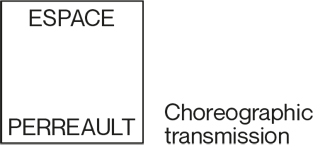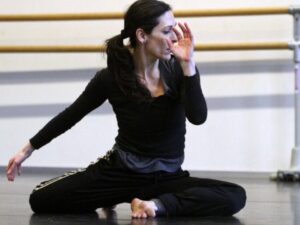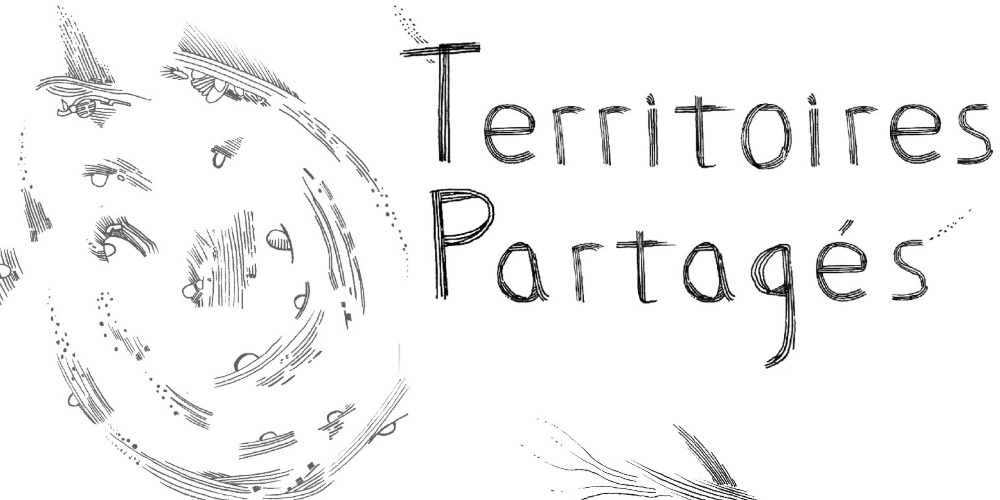The freedom of technique – It’s all in the mind
by Ami Shulman for Territoires Partagés – February 2020
Ami Shulman is a movement artist, playwright, rehearsal director, educator and somatic therapist. She has choreographed for the National Theatre of London, the Shakespeare Theatre Company and has been assistant choreographer for several works. Ami has taught throughout Europe, Canada and the USA for NDT and Julliard, among others, and was a rehearsal director for Goteborg Operans Danskompani. She is certified in Feldenkrais. Here she shares how Feldenkrais practice can nourish our approach to dance technique.
“I believe that the unity of mind and body is an objective reality. They are not just parts somehow related to each other, but an inseparable whole while functioning.” – Moshe Feldenkrais
Often in the space of teaching a technique class, I have come to observe that many dancers are removed from the experiential aspect of the movement itself. There is often a gap between what dancers are doing in the class and how they perceive the work that they will be doing on stage.
The perception of technique is often viewed upon in a very limiting and restrictive way. Instead of cultivating new possibilities and freedoms, affording the dancer a relationship with their instrument, it has often become a strong factor in alienating the dancer from their movement. Our social attitudes and conditionings have served a role in this restrictive perception, by attempts to secure achievements and preserve ideals through its polarized thinking, such as right and wrong or good and bad, which has interfered with the way we process information.
When training in dance we would certainly like to cultivate a mastery of ourselves in relation to the mastery of the movement, and not a mastery of the movement at the expense of the self. This gives rise to the question; how can we cultivate the freedom and individuality of the movement, the virtuosity and precision/specificity, without the constraints of these imposed upon ideals of perfection?
This is where the Feldenkrais work can help us understand an approach whereby there is no contradiction between the clarity and rigor of structure and the expression and facility of individuality.
In fact, it holds that the more the person is specific in their movement, the more we will perceive their individuality and the more a person is embodied within themselves, the more specificity we will perceive in the movement.
The Feldenkrais Method is a movement system that helps clarify our thought and movement patterns so that that there is more correlation between our intentions and our actions. In other words, Feldenkrais is a way to look at and consider what we are doing in any given moment. Engaging in this way primes the person to their highest state of awareness and self-organization allowing them to act in accordance with what the situation demands. This state of readiness is essential for the demands of performance. Feldenkrais accesses this state of readiness in an embodied way, through a felt sense of availability in the movement.
In this article, I will introduce three concepts from the Feldenkrais philosophy that are essential in bridging the work of Feldenkrais into a dance context. These ideas can influence the way we think about technique as well as the perspective through which we approach a class. They are Availability, Awareness and Clarity of thought and it is essential that these ideas are embodied and experienced through the action.
Availability is what lies in the realm of possibility for that person, not just physically, but also in the perceived potential of what else may unfold from that state. Availability is essentially the embodied awareness of the potential state of movement.
In a technique class, this sense of availability can be accessed by the way in which we listen to ourselves. It begins in the mind and reflects as a state of curiosity and readiness to the task at hand. How do you enter the studio? How do you stand when you are ready to begin an exercise? Are you too ready? It is about not doing more than is asked for, it is about sensing what is enough. Awareness with this level of sensitivity gives us access to both the ease within our structure and efficiency within our movement.
Awareness is fundamental to the Feldenkrais Method. It is through awareness that we engage with the living moment, which is the essence of presence. From a Feldenkrais perspective we make the distinction to speak of awareness through movement. Here, awareness goes beyond simply noticing, it is an active, embodied state of making incremental changes within the movement in order to sense and feel these differences somatically. This very act registers the new information in the brain, imprinting it in the nervous system and provides the person with a multitude of new options that were previously unavailable to them. These options become the cornerstones of choice in our action and our thinking.
We can access this heightened awareness in a technique class by shifting our attention to how we are moving within a given structure, rather than what it is that we are doing. This takes us away from movement as a form and elicits an embodied expression that derives from the individual with all that is available to them. There is always more available to us than we think. Entering movement with the focus on how we move, creates a spaciousness within the movement, giving us more possibilities through which we could become an active participant within the process.
Neither awareness nor availability would be possible without a clarity of thought. They are all interrelated. Clarity in movement begins with clarity of thought. You cannot be clear in your action if the movement is not available to you and you cannot be clear in the movement if your thought is not clear to you. Clarity in movement involves both the clarity with ourselves (somatosensory) and the clarity of our intention, which mobilizes our action in space. Clarity of thought in movement may seem simple, yet it is elusive.
This is a prime example, when doing an exercise of ‘leading from the head’, as a point of initiation, one can observe whether the movement is actually initiating from the head or whether the spine is driving the head? While the distinction seems obvious, the action is often confounded because the thought was not embodied. In such a case this would manifest as either a lack of awareness in sensing the head (the initiation point) or a lack of awareness in the directionality of the movement (intention). This reveals to us how the intention to do something can be quite different from what is actually being done. It is fascinating to think that the precision of our movement is largely connected to how we think, rather than how we move.
It is only through movement that we can integrate all these elements, bridging the gap between our thinking selves and our acting selves. The Feldenkrais Method considers movement as the totality of a person. There is no higher value given to any one element, yet our capacity can only improve through our presence of mind.
Approaching a technique class from this perspective, no matter the structure of the class could expand the degrees of freedom within which one works. From this angle, not only can we can better understand ourselves through movement, but it becomes the ultimate tool for self-directed learning. It is through awareness, availability and clarity that we are truly able to understand the agency that we have in our movement. It is not just the options that become available to us, but that we are able to choose the options that best reflect our intentions – herein lies our growth and our freedom.




